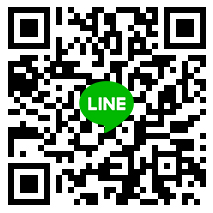Counterfeit goods such as chargers, adapters and headphones from a well-known American company: Apple Inc. which are sold on the market. The price is less than one tenth of Apple Inc.. Does it matter? ! What? ! It is also illegal for news reports to sell screen protectors? !
God! Really?
Criminal Judgment No. 54 of Intellectual Property in 2019, Taichung District Court, Taiwan.
Regarding the infringement of the trademark rights of "iPhone logo (white)" (Trademark Law §5Ⅱ, §95, §97). This judgment was Mr. Huang violated article 97 of the Trademark Law: selling goods illegally that had infringed trademark rights. Imprisonment for two months, the punishment may be commuted to a fine at a daily rate of NTD 1,000. The things seized are shown in the figure: No. 1, No. 2 and No. 3 were all confiscated; No. 4 weren't. If all or a part couldn't be confiscated or not appropriate to execute the confiscation, the price shall be requested.
Mr. Huang's phone repair center had sold some counterfeit goods of Apple Inc.. which included chargers, adapters and headphones.
This situation has clearly violated Article 97 of the Trademark Law: the crime of illegally selling goods which infringing trademark rights. The facts of the crime are clear.
The controversial point of this case: whether the screen protector constitutes an infringement of trademark rights.
The trademark of Apple Inc.’s phone screen is a “flat trademark”, not a “three-dimensional trademark”. The defendant's phone screen protector was just the appearance of the product itself, and didn't use the trademark. Apple Inc. didn't specify the trademark of the phone screen for "protective films adapted for smartphones" goods, and the goods services are not similar. In this part, the defendant wasn't guilty.
Apple Inc. has always attached great importance to the layout of its goods in intellectual property such as trademarks and patents, etc. The screen trademark of this case, the trademark name "iPhone logo (white)" (ink color) (plane), trademark registration No. 01583383, registered in class 9. However, there was no designated good item: protective films adapted for smartphones. After investigation, this case was not approved smoothly in the examination process at first. It was approved after 6 "redress". Is it possible to revise the designated items during this "redress" process and thus be approved for registration? Is there any doubt about the infringement of trademark rights based on the appearance of the goods looks like the "trademark"?
Although judging by one of the situation of "infringement of trademark rights": use the same trademark as the category designated by others, but the merchant sells physical goods. It seems inappropriate to directly compare the appearance and shape of the goods with the "trademark"?
The premise of the legal responsibility of a trademark is "act of trademark use". But is this act of making a screen protector a trademark use? Does the manufacturer of the screen protector use it for marketing purposes, and does the consumers know that is a trademark? Or is it just for functional use?
Assuming that the scope of protection of this "trademark right" is expanded and explained, the phone screen protector is a related good, so it must be within the scope of protection. Then the pattern of the trademark right is therefore not distinctiveness, (there are explanations about factors for determining distinctiveness in Examination Guidelines on Trademarks)
1. To judge whether a trademark is distinctiveness, first understand the relationship between the mark and the designated goods or services. When a logo conveys a considerable amount of information about goods or services, consumers' understanding of the logo is only a description of the goods or services. That will not be used as a logo to identify the source. (Not distinctiveness)
2. If the logo is used to indicate the shape, quality, function or other description of the goods or services, for consumers, it is only to convey relevant information about the goods or services. It is also necessary for competitors in the same industry. So that is naturally cannot be used exclusively by a specific industry. (Not distinctiveness)
Gold Keen said:
1. The sale of counterfeit goods is criminally responsible. In particular, global companies have made great efforts to maintain trademark right. DON'T easily try to sell or manufacture counterfeit goods!
2. The phone screen protector that we often use, the registered trademark should be used in accordance with the form of its application for registration. The flat graphics presented by the trademark shall be used for each product designated by the registration, to ensure that its actual use is relative to the registered trademark, and it is consistent with the common sense of the society without losing its distinctiveness. This is evidence of effective use to maintain trademark rights (refer to Article 64 of the Trademark Law).
The so-called "functionality" refers to the design or characteristics of a specific good or service, and is indispensable in terms of the use or purpose of the product or service. As for the screen protector is not one of the products designated by the registered trademark. The question about whether the flat trademark or even its three-dimensional appearance are not distinctiveness or functional that is not the scope of the trademark that should be examined during the administrative examination of application for registration. Therefore, it must be judged by the judiciary based on relevant evidence and explained together.








